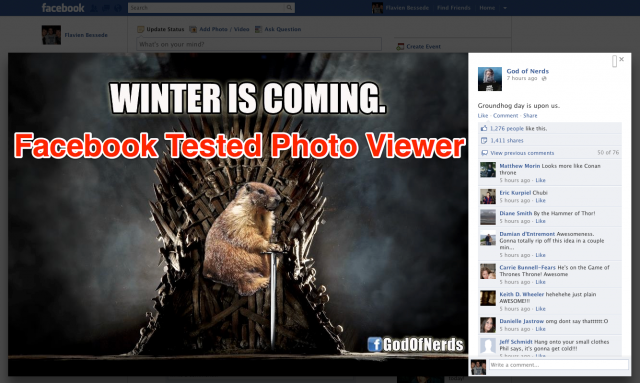Your Facebook Photos may Never Be Deleted, But There Might Be a New Way to View Them
News that your Facebook photos may still be accessible after you delete them coincides with the site’s new photo viewer.


facebook1
We already know that Facebook is the largest photo sharing site, with a staggering average of 250 million photos uploaded every day, which is pretty revolutionary. What isn’t revolutionary is the way the company deals with users’ photo privacy. In 2009, Ars Technica discovered a glitch wherein once a user deleted a photo from their Facebook account, the image might still exist on the company’s servers–and could still be accessible via a direct link possibly forever.
After the inquiry Facebook claimed that they were “working with our content delivery network (CDN) partner to significantly reduce the amount of time that backup copies persist.” Yet in the 3 years since the glitch was discovered many “deleted” images are still accessible. When asked why these images are still available, Facebook gave a similar response, admitting that their older content storage systems don’t always delete images from networks in a reasonable period of time.
The company says that only about 2 percent of user photos are still on the old system, and that the newer system is supposed to ensure that photos are fully removed within 30 days after being deleted by a Facebook user.
Meanwhile, the site is testing a new photo viewer that looks suspiciously similar to the Google + photo viewer. The new layout mounts the “like” and “share” buttons and comments to the right rather than beneath images, to encourage more engagement with the images. The current Facebook photo viewer has as blank space on the right, making users scrolling past the image to see the comments, making users more likely to leave the photo viewer before engaging.
Facebook though seems unremorseful about almost literally copying the design of the Google+ photo viewer. In the months since Google+ launched, Facebook has added features found in Google+, including an asymmetrical subscribe option, video chat, and enhanced friend lists, while Google+ pretty openly used Facebook’s design as a starting point.
It seems a good idea or deleted photos are all fair game for the social networking site that has inadvertently become the largest photo sharing site on the web.
Via. Tech Crunch and Cnet